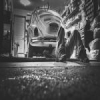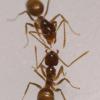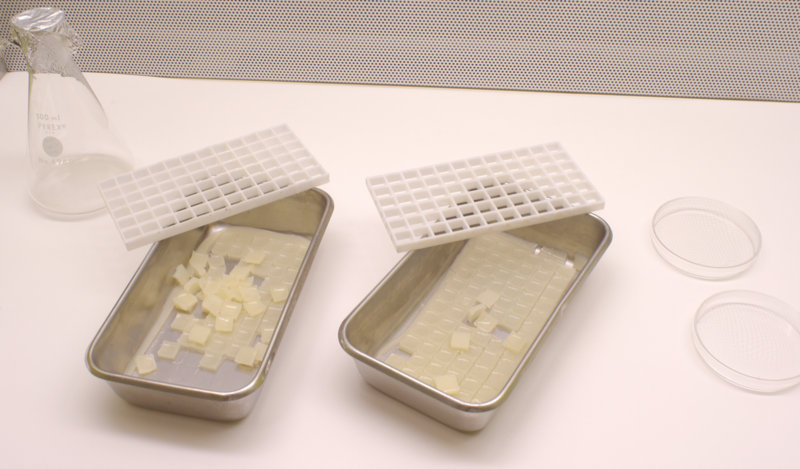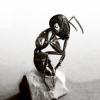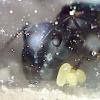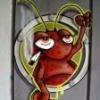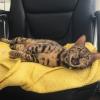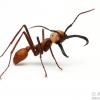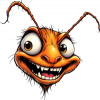I've finally gotten round to creating a research thread for my synthetic ant diets. I aim to provide some insights into formulating synthetic diets as well as show that it is fairly easy to accomplish.
Nonetheless, there are certain pitfalls along the way that I will highlight so that you need not repeat my previous mistakes. As far as possible, each step will be illustrated with a picture but for those that do not, there will be clear descriptions of the steps taken.
Introduction
Synthetic ant diets are nothing new. Several research papers have documented the creation of these diets with the most prominent ones below:
Straka J. and Feldhaar H. 2007. Development of a chemically defined diet for ants. Insect. Soc. 54: 100–104
Bhatkar A.P. and Whitcomb W.H. 1970. Artificial diet for rearing various species of ants. Florida Entomol. 53: 229–232
Dussutour A. and Simpson S.J. 2008. Description of a simple synthetic diet for studying nutritional responses in ants. Insect. Soc. 55: 329–333
Ants require two main types of food, carbohydrates and protein. Generally, worker ants require very little protein and rely on carbohydrates for energy while larvae require a much larger amount of protein to grow. Also, adult ants can only feed on liquid foods and only larvae can consume both solid and liquid foods.
The key to creating successful diets is the protein to carbohydrates ratio (P:C). Several studies have shown that too much protein can lead to lifespans being shortened by half and colonies collapsing. In short, too much protein will kill your ants so great care must be taken in deciding the amount of protein.
The Dussutour and Simpson diet (Which is what Formula is based on) found that the most successful combination for Rhydontiponera ants is a P:C ratio of 2:1 so that is what we will be using later. However, I have made modifications to the diet which have given it greater receptivity to certain species of ants that previously refused to recruit to the original. Also, egg has been omitted from the diet because a research done on egg white injury in ants have provided sufficient reason to remove it. The study showed that ants fed on egg white diets had shortened lifespans and showed increased aggression towards nestmates.
Creating synthetic ant diets offer a more consistent source of nutrition and is also easier to feed in the long run. In addition, it is more economical because very little of each ingredient is needed in making one batch.
Ingredients
Protein
For protein, there are a few choices to pick from:
Egg
Whole eggs are a high quality source of protein, or more specifically, albumin. It has been used in ant formulations since the original Bhatkar-Whitcomb diet but it is known to cause egg white injury or biotin deficiency when used in high quantities. Hence, I have chosen to omit it from my own formulations. If you choose to use eggs as a protein source, you must ensure it is used in conjunction with other protein sources.
Calcium caseinate
This is normally found in milk alongside whey. However, it is known to sediment in solutions as it is the least water soluble of the caseinates, causing an uneven distribution of protein. Hence, it is advised to avoid calcium caseinate.
Whey concentrate
Whey is also found in milk and is available as a concentrate or isolate. It is commonly consumed by bodybuilders as protein so it can purchased from your local health store. Isolate contains a higher protein percentage of about 90 - 94% while concentrate has 70%-80%
Insect Extract
Insect extracts are perhaps the best source of protein since they are low fat (with the exception of waxworms) and are consumed naturally by ants. I prefer cricket flour which can be bought online or from a health store. Make sure you buy only those with no preservatives and no additives.
Carbohydrates
Fructose and Sucrose
Fructose and sucrose are found in honey and table sugar. Fructose is slightly sweeter than sucrose. Honey is prefered here because it is minimally processed so it keeps all trace minerals and vitamins, instead of refined sugar which are "empty calories". If you can obtain unrefined sugar, that would be best but it can be somewhat tricky to get hold of.
Preservatives
Sodium Benzoate
Sodium benzoate is used to as an antimicrobial agent to inhibit mold growth. It is easily obtained at stores selling baking supplies. It is only effective at a pH of below 4.5 so ascorbic acid (vitamin C) needs to be added to reduce the pH. If you choose to use vitamin C tablets, ensure that no flavourings and additives are added.
Vitamins/Others
Vanderzant Vitamin
This is specially designed for insects but can be hard to obtain. Use sparingly (about 2g per 300ml).
Agar
Used to solidify food into cubes or gel
Ascorbic Acid (Vitamin C)
Used to increase the acidity of the solution to increase the effectiveness of sodium benzoate at inhibiting mold growth
Food Coloring of choice
Tools

Milligram scale
This is used to measure precise quantities of ingredients. I use a cheap diamond scale bought online.
Stove/ Microwave
I prefer using a gas stove because it offers me greater control over the heat. A microwave can be used but a bit of finesse is required because the solution should be taken out when it starts to boil.
Spoons/Stirring rod/Beakers
Small coffee spoons can be used to scoop minute amounts of powder ingredients.
pH scale is not needed but can be used to double-check the pH.
Steps
1. Ensure environment and tools are clean
Wash all tools with soap and sterilize metal/glass tools in boiling water if possible. This is to maximise effectiveness of the preservative used. Wash hands thoroughly with soap before beginning.
Common mistake: Do not skip this step! Skipping this step can cause mold to grow despite the presence of sodium benzoate. Observe the picture below for details.
(Note that the bottom left was from a contaminated batch that still had preservatives. These samples were left for a week in a moist environment to simulate the likely conditions that your ants will be living in.)

2. Prepare the following quantities of ingredients:
4.916g (3.335g)* of cricket powder
2.222g (1.665g)* of whey
12.220g (10g)* of unrefined honey (Percentage of sugar varies based on honey used. Check nutrition labels)
100ml of distilled water
1.300g of agar (Increase or reduce this to change consistency of the final product. I used a 1.3 % agar solution at a 5 :1 ratio of agar solution to dry mass of ingredients)
0.120g of sodium benzoate
2.000g of ascorbic acid (You may have to increase this if you use more water)
1g of Vanderzant
2 drops of food colouring
*brackets indicate actual amounts of protein or sugar present
Common mistake: Do not approximate! Weigh all ingredients using the milligram scale. Small deviations of ±0.01 are acceptable.
Tip: You can weigh certain ingredients together to save time. Use a small container/dish to hold the ingredient being weighed but remember to 'tare' the scale to 0 before adding the ingredient.




3. Dissolve all ingredients EXCEPT AGAR in 40 ml of distilled water
Stir until all ingredients are dissolved.
Tip: The honey is likely to stick to the weighing container. Rinse with water and pour into the mixture until no more honey is left. Better still, use a larger container to weigh the honey and just mix ingredients in that container later.

4. Dissolve agar strips in boiling water
Boil 100ml of distilled water before adding agar strips. Stir until dissolved and switch to low heat
5. Add the mixture from step 3 to the agar solution on low heat
Stir until the solution is homogenous and evenly spread out.
Common mistake: Do not allow parts of the solution to agglutinate/clump up! This will cause an uneven distribution of protein and carbohydrates
*OPTIONAL STEP* Skip to step 6 if you don't want to pasteurize your ant diet. Pasteurization kills microbes and allows your ant food to be stable-shelf. That said, refrigerating it is still prefered.
5a. Heat solution at a constant temperature of about 75 celsius for at least 20 seconds before cooling it to 4 Celsius in an ice bath or fridge.
6. Pour mixture into a shallow dish or mold (if you want shapes)
I used sterile petri-dishes but you can use any shallow dish that has been cleaned with soap or sterilized.
Common mistake: Ensure dish or mold is cleaned with soap or sterilized. Do not touch the mixture with your hands!

7. Refrigerate completed ant diet at around 4 Celsius
To store it long-term, put it in the freezer compartment.
If you have pasteurized your food in step 5a, it is fine to store it at room temperature.
Whew! If you have followed the steps above, congratulations, you have just made your first batch of ant food.
This is my first version using cricket flour and I'm already seeing greater receptivity. Picky species like Nylanderia sp. readily accepted this version so if you have trouble feeding your ants, try this out.
Feel free to modify this formulation and post your own attempts below.
If enough people are interested, I will create an online logsheet to allow everyone to share their own synthetic ant diets.
FAQ
Can I feed my ants solely this?
While studies have shown that healthy colonies have been raised solely on this, I recommend using this as the staple food while offering the occasional insect. Water should be provided at all times. If your colony does not grow as expected, cease feeding a nd provide sugar water ad libitum along with insects
Feedback this to me on this thread so I can figure out what's wrong
Isn't this the same as Formula by Byformica?
No.
While Terry and I base our diets off mostly the same literature, we have made our own modifications to the original D&S diet so they are very different in composition.
The PC ratio for this particular diet remains the same but I've increased the amount of sugar for sugar-loving species which refused to take the P:C 2:1.
This sounds like a lot of work. Can I buy some from you?
Currently, I have no plans to sell this. I am planning on sending free samples in the future to people in exchange for them recording their observations for me so I can improve this diet. If there is enough interest and when I have time of course, so drop me a PM to indicate your interest.
My ants don't want to eat this! What's wrong?
Again, many factors are involved such as consistency, preservative levels, etc. Try increasing amounts of honey used and remove other competing sources of food.
Feedback this to me on this thread so I can figure out what's wrong
Can I use a liquid feeder with this?
Yes but I do not recommend it. Adding more water will result in a gel but it will eventually agglutinate, causing the feeder to clog.
Can I repost this somewhere else?
Yes, but credit me and provide a link back to this page.
Moderators, please sticky this if you find it beneficial.
And for all those who've found this helpful, please like this post. Thanks! ![]()
Edited by Etherwulf, September 22 2015 - 6:14 AM.

